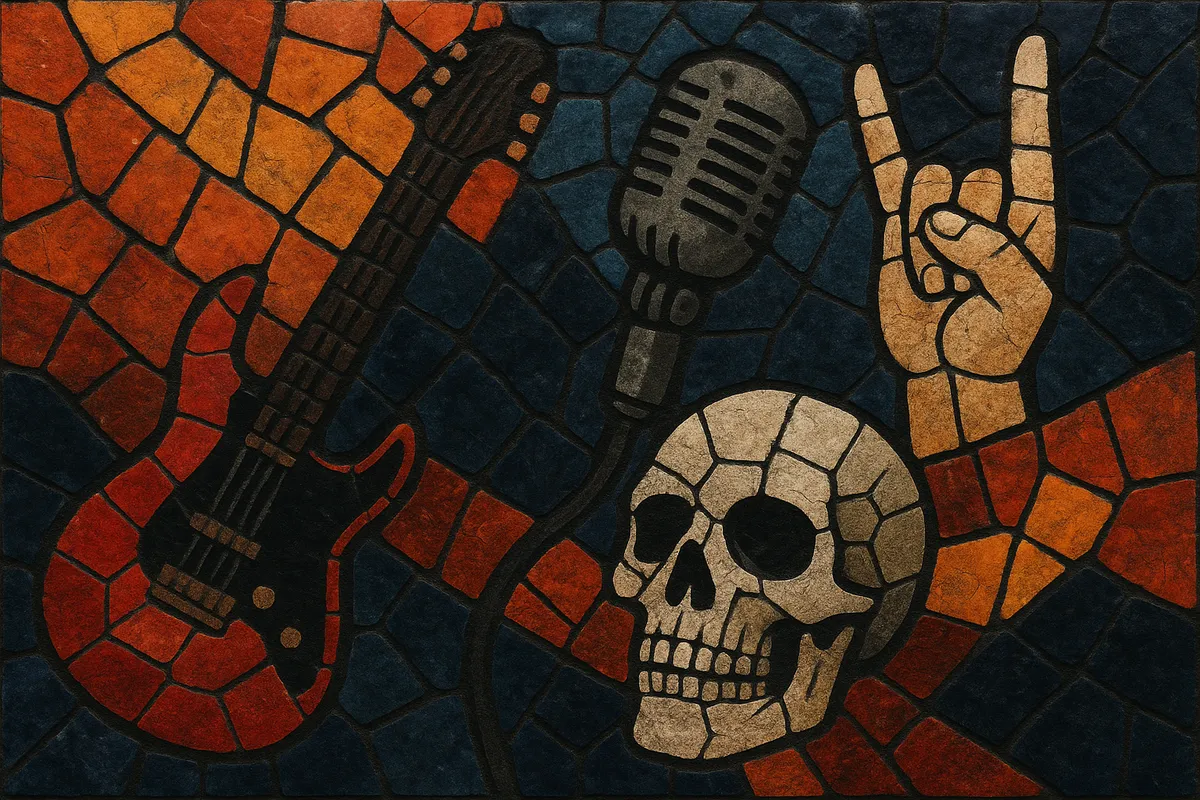Rock is a broad family of popular music centered on amplified instruments, a strong backbeat, and song forms that foreground riffs, choruses, and anthemic hooks.
Emerging from mid‑20th‑century American styles like rhythm & blues, country, and gospel-inflected rock and roll, rock quickly expanded in scope—absorbing folk, blues, and psychedelic ideas—while shaping global youth culture.
Core sonic markers include electric guitar (often overdriven), electric bass, drum kit emphasizing beats 2 and 4, and emotive lead vocals. Rock songs commonly use verse–chorus structures, blues-derived harmony, and memorable melodic motifs, ranging from intimate ballads to high‑energy, stadium‑sized performances.
Rock grew out of rock and roll in the United States during the 1950s, itself a fusion of rhythm & blues, country, gospel, and jump blues. Electric guitars, backbeat-focused drumming, and charismatic vocal delivery became foundational. Early pioneers like Chuck Berry, Little Richard, Elvis Presley, and Buddy Holly established riff-driven songs, guitar solos, and youth-centered themes.
The British Invasion (The Beatles, The Rolling Stones, The Who, The Kinks) globalized rock and accelerated studio experimentation. American scenes diversified into folk rock (Bob Dylan, The Byrds) and psychedelic rock (Jefferson Airplane, The Jimi Hendrix Experience), while albums became artistic statements. Rock expanded harmonically and texturally, incorporating modal harmony, feedback, tape effects, and extended forms.
Rock splintered into hard rock (Led Zeppelin, Deep Purple), progressive rock (Pink Floyd, Yes), singer‑songwriter and soft rock, and arena‑sized experiences. Simultaneously, punk rock (Ramones, Sex Pistols, The Clash) reacted against perceived excess with raw energy and DIY ethics, seeding post‑punk and new wave. The decade cemented rock as both countercultural and mainstream.
Rock adapted to new media and production aesthetics. Glam metal and heartland rock shared the charts with college/alternative rock and goth/post‑punk offshoots. Digital effects, synthesizers, and polished production influenced guitar tones and song craft while live spectacle remained central.
Grunge (Nirvana, Pearl Jam) and Britpop (Oasis, Blur) led a generational shift. Indie and post‑rock explored texture and dynamics; pop‑punk and nu‑metal introduced new rhythmic and tonal palettes. Rock scenes proliferated globally, with regional languages and identities.
Rock interweaves with electronic, hip‑hop, and pop, while garage revival, emo, math rock, and psych continuums thrive. Although its chart dominance fluctuates, rock’s performance grammar (riffs, backbeat, amplification) and cultural codes continue to shape popular music and live performance worldwide.


